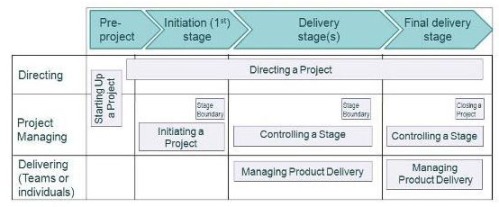The complete refresh of the PRINCE2® project methodology and credentials is over and the 2009 version has been released.
PRINCE2 is a project management framework which has wide acceptance in many government areas. The intellectual property of PRINCE2 belongs to the British Crown which has placed the methodology is in the public domain.
Projects in Controlled Environments explains the name and the operative word is ‘controlled’. The business remains in control of its projects and everything in the method can trace back to this fundamental principle. This means the methodology works well in environments where the same organisations is the client and the primary ‘performing organisation’ for the delivery of the project.
The 2009 refresh has:
- Added 7 principles that were previously implied.
- Changed 8 Components into 7 Themes (Configuration Management has become part of the Change Theme).
- Reduced 8 Processes to 7. The former Planning process is dealt with as part of the Plans Theme.

- Added a new chapter on tailoring PRINCE2 to the environment in an attempt to reduce criticisms of the amount of bureaucracy involved in the methodology.
- A Benefits Review Plan is now created as part of Initiating a Project and updated at end of each stage. Benefits Reviews may occur at the end of stages as well as after closure and the concept of dis-benefits has been introduced. Interestingly, the Senior User is held to account for the realisation of benefits (ie, the customer).
- The Risk Management chapter has been rewritten to align with other OGC Standards. Response types cover opportunities as well as threats and a Risk Management Strategy introduced.
- A smaller book focused on the needs of project sponsors ‘Directing Successful Projects with PRINCE2’ has been released.
The structure of PRINCE2:
The 7 principles which are considered universal and self-validating must exist in every project run according to PRINCE2. They are:
- Continued business justification
- Learn from Experience
- Defined Roles and Responsibilities
- Manage by Stages
- Management by Exception
- Focus on products
- Tailor to suit the project environment.
The 7 processes are outlined in the diagram above. Underlying these processes are the themes presented in the methodology and these amount to best practice in a project environment. They answer questions about what, why, who, when, how, how much and provide clarity. The Themes are:
- Business Case
- Organization
- Quality
- Plans
- Risk
- Change
- Progress
PRINCE2 -v- PMBOK
The primary difference between PRINCE2 and the PMI/ PMBOK® Guide view of projects is the boundaries. PMI (and most likely the new ISO21500) see a project starting when it is initiated by the client and completing once the outputs defined in the project charter are delivered. This is quite likely correct from a project practitioner’s perspective.
PRINCE2 sees the project starting much earlier and continuing through to the realisation of value by the organisation. This is quite likely correct from the perspective of an organisation initiating and managing internal projects.
There is very little difference in terms of the processes used to run a project between PRINCE2 and the PMBOK. What is different is PRINCE2 is totally focused on managing internal projects with organisational managers having a direct say in the management of the overall process and it provides an effective methodology for this circumstance. The PMBOK® Guide is a pure PM standard and has a more generic set of processes that can be adapted to a much wider range of circumstances and used in any situation (eg, a traditional project where the client contracts the project delivery organisation).
Which is best? What do you think??
We will continue to focus on the PMI range of credentials with our training mainly because of their wider application. PRINCE2 works well in the right circumstances. Whereas, the PMI range of standards seem to apply to most circumstances. But I suppose that is the key difference between a methodology and a generic standard.


